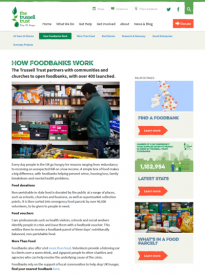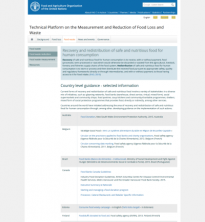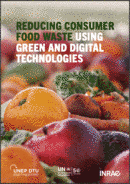Services and Infrastructure for Reducing Consumer Food Waste
Food banks are non-profit, charitable organizations that distribute food to those who have difficulty purchasing enough food to avoid hunger. They provide a service and an outlet for surplus food which may otherwise go to waste.
Donating food to people in need is another waste reducing strategy. The main caterer at the headquarters of the Food and Agriculture Organization of the United Nations in Rome donates excess food to a local charity. The charity then redistributes food to those in need in the city.
Key Publications
Details on what foodbanks are and how they function are included. | |
Recovery and Redistribution of Safe and Nutritious Food for Human Consumption Definitions of food recovery and redistribution are discussed, and country level guidance and examples are included. |
More Resources
More Resources
31 October 2023













